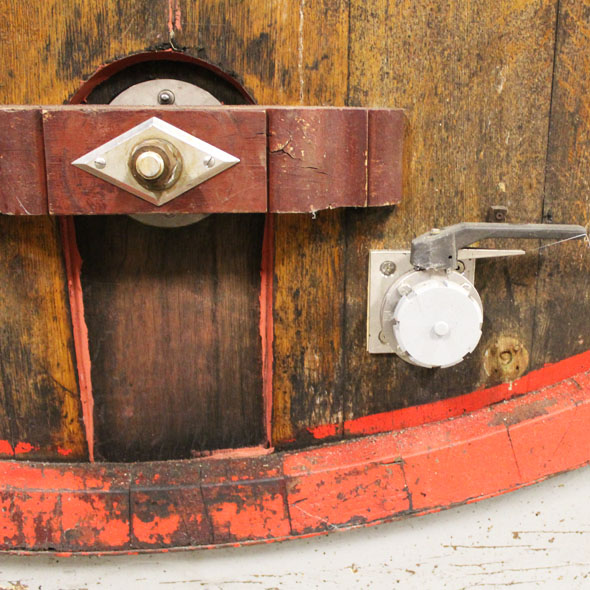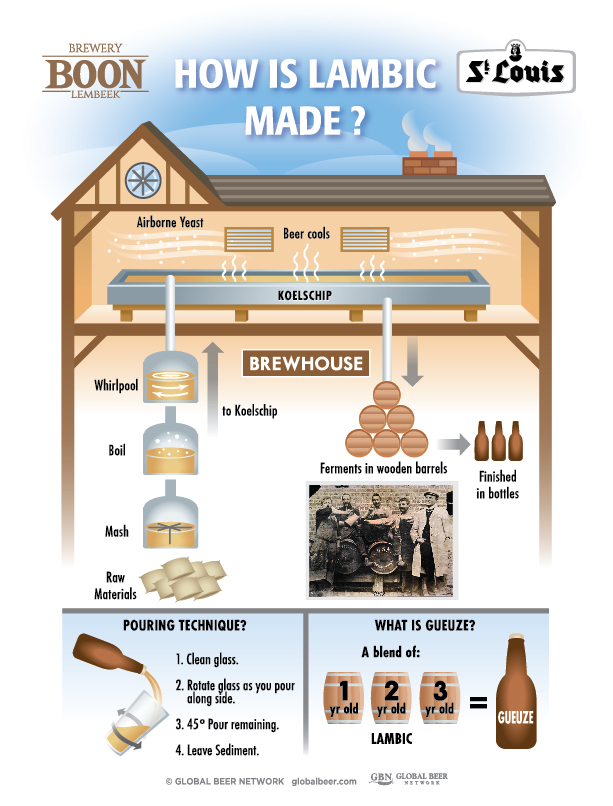
Lambic beer is one of the most difficult styles of beer to brew in that the brewmaster has a very small window of time to inoculate the wort, typically between late September and early April. On top of that the weather conditions within that time frame need to be closely monitored.
After mother nature sets the stage it is up to the brewmaster to provide her with the proper solution of sugar and water (wort) in a flat vessel called a koelschip to be inoculated with airborne yeast. From there it will proceed into barrels for fermentation and maturation. A host of bacteria and tannins from the wood play their part in the flavor of the final lambic beer.
Lambic production is a true art form and the final result is not meant to be merely sour, it should be complex, aromatic in balanced. If lambic is overly acidic than one bacteria won that battle, rather than achieving symbiosis with the other elements.
Brewers like Brouwerij Boon and Brouwerij Van Honsebrouck then blend various aged lambics (traditionally 1, 2 and 3 years old) to make Geuze. Each lambic imparts a certain flavor or mouthfeel to create a very complex brew. The younger lambic is very important because that will provide the residual sugars to kick start re-fermentation in the bottle. Re-fermentation gives the beer its champagne-like carbonation and incredibly long shelf life. Oude Geuze Boon Mariage Parfait has a twenty-year shelf life!
To learn more about lambic and its producers in Belgium visit www.lambic.info which is the most comprehensive lambic resource on the internet. Below is a helpful infographic to understand the basic idea behind how lambic is made made within the brewhouse.

